
Washington, D.C. Mrs. Ella Watson, who has been a government charwoman
for twenty-six years, with three of the five children she supports on
her salary of one thousand eighty dollars per year:
photo by Gordon Parks for the US Office of War Information, August
1942; image by C. Thomas Anderson/Verbatim Multimedia, 29 April 2013
(Farm Security Administration / Office of War Information Collection,
Library of Congress)
Whoever it was who lived here lived a mean life
Each door has locks designed for keys unknown
Our living room was once somebody's home
Our bedroom, someone's only room
Our kitchen had a hasp upon its door.
Door to a kitchen?
And our lives are hasped and boundaried
Because of ancient locks and madnesses
Of slumlord greed and desperate privacies
Which one is madness? Depends on who you are.
We find we cannot stay, the both of us, in the same room
Dance, like electrons, out of each other's way.
The cruelties of ages past affect us now
Lorenzo Thomas (1944-2006): MMDCCXIII 1/2, from Chances are Few, 1979
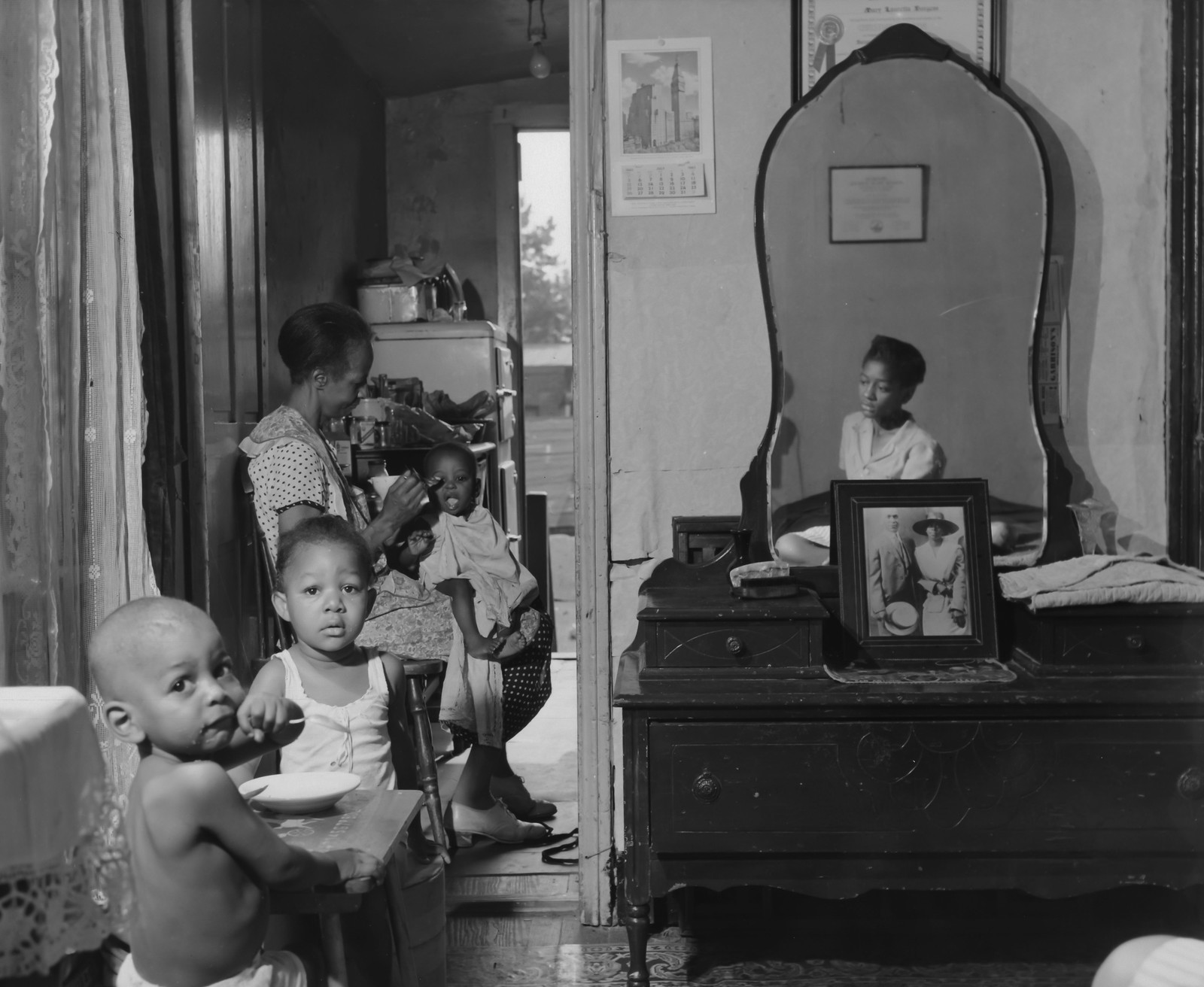
Washington, D.C. Dinner time at the home of Mrs. Ella Watson, a government charwoman:
photo by Gordon Parks for the US Office of War Information, August
1942; image by C. Thomas Anderson/Verbatim Multimedia, 29 April 2013
(Farm Security Administration / Office of War Information Collection,
Library of Congress)
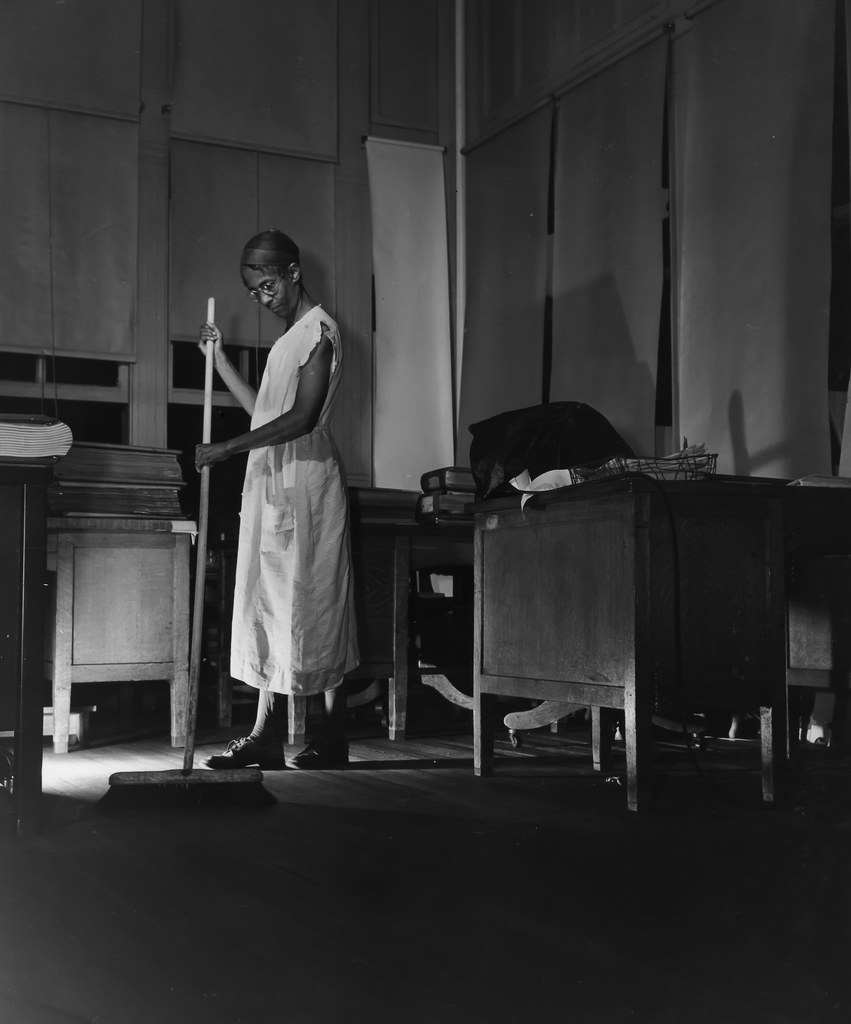
Washington, D.C. Government charwoman cleaning an office after regular working hours: photo by Gordon Parks for the US Office of War Information, August 1942; image by C. Thomas Anderson/Verbatim Multimedia, 29 April 2013 (Farm Security Administration / Office of War Information Collection, Library of Congress)

Washington, D.C. Government charwoman cleaning an office after regular working hours: photo by Gordon Parks for the US Office of War Information, August 1942; image by C. Thomas Anderson/Verbatim Multimedia, 29 April 2013 (Farm Security Administration / Office of War Information Collection, Library of Congress)
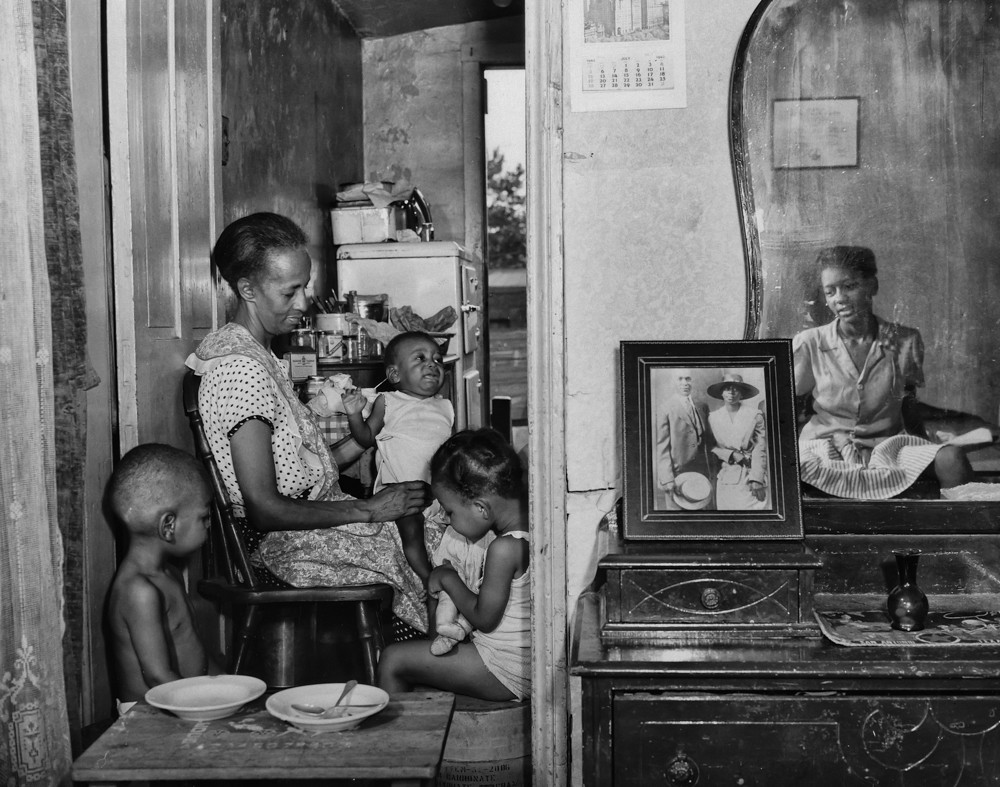
Washington, D.C. Mrs. Ella Watson, a government charwoman, with three grandchildren and her adopted daughter: photo by Gordon Parks for the US Office of War Information, August 1942; image by C. Thomas Anderson/Verbatim Multimedia, 3 January 2013 (Farm Security Administration / Office of War Information Collection, Library of Congress)

Once with happier surroundings, this section now houses a large crowded Negro population living in most unsanitary conditions: photo
by Carl Mydans for U.S. Resettlement Administration, September 1935
(Farm Security Administration/Office of War Information Collection,
Library of Congress)

Slums near the Capitol, Washington, D.C. With the Capitol clearly in view, these houses exist under the most unsanitary conditions: outside privies, no inside water supply and overcrowding: photo by Carl Mydans for U.S. Resettlement Administration, September 1935 (Farm Security Administration/Office of War Information Collection, Library of Congress)

Slum front yard playground, Washington, D.C. Such is the front yard available to these two youngsters to play in: photo by Carl Mydans for U.S. Resettlement Administration, September 1935 (Farm Security Administration/Office of War Information Collection, Library of Congress)

Front of Negro home near Capitol, Washington, D.C. Interiors of these homes vary little. A chair or two and a table, a bed and perhaps an extra mattress on the floor to care for six to ten people: photo by Carl Mydans for U.S. Resettlement Administration, September 1935 (Farm Security Administration/Office of War Information Collection, Library of Congress)

Backyard of Negro dwelling in slum area near the House office building, Washington, D.C.: photo by Carl Mydans for U.S. Resettlement Administration, September 1935 (Farm Security Administration/Office of War Information Collection, Library of Congress)

Kitchen of Negro dwelling in slum area near House office building, Washington, D. C.: photo by Carl Mydans for U.S. Resettlement Administration, September 1935 (Farm Security Administration/Office of War Information Collection, Library of Congress)

A
once proud section, Washington, D.C. These houses now are overcrowded
with a Negro population and greatly in need of more sanitary methods: photo
by Carl Mydans for U.S. Resettlement Administration, September 1935
(Farm Security Administration/Office of War Information Collection,
Library of Congress)

Slum backyard Washington, D.C. These houses now are overcrowded with a Negro population and greatly in need of more sanitary methods: photo by Carl Mydans for U.S. Resettlement Administration, September 1935 (Farm Security Administration/Office of War Information Collection, Library of Congress)

Slum area, Washington, D.C.: photo by John Vachon, November 1937 (Farm Security Administration/Office of War Information Collection, Library of Congress)

Southwest Washington, D.C.: photo by John Vachon, May 1937 (Farm Security Administration/Office of War Information Collection, Library of Congress)

Children's drawings on wall, Washington, D.C.: photo by John Vachon, April 1937 (Farm Security Administration/Office of War Information Collection, Library of Congress)

Street scene, Washington, D.C.: photo by John Vachon, November 1937 (Farm Security Administration/Office of War Information Collection, Library of Congress)

Slums behind Metropolitan Police Department, Washington, D.C.: photo by John Vachon, April 1937 (Farm Security Administration/Office of War Information Collection, Library of Congress)

Negro church, Washington, D.C.: photo by John Vachon, May 1937 (Farm Security Administration/Office of War Information Collection, Library of Congress)

Spectator at fire, Washington, D.C.: photo by John Vachon, December 1937 (Farm Security Administration/Office of War Information Collection, Library of Congress)

Children in street at N and Union Streets SW, Washington, D.C.: Louise Rosskam, 1941 or 1942 (Farm Security Administration/Office of War Information Collection, Library of Congress)
Car in front of Shulman's Market, on N at Union St. SW, Washington, D.C.: Louise Rosskam, 1941 or 1942 (Farm Security Administration/Office of War Information Collection, Library of Congress)

Shulman's Market, on N at Union St. SW, Washington, D.C.: Louise Rosskam, 1941 or 1942 (Farm Security Administration/Office of War Information Collection, Library of Congress)

House in Washington, D.C.: Louise Rosskam, 1941 or 1942 (Farm Security Administration/Office of War Information Collection, Library of Congress)


Lines of people at the offices of the Baltimore City Welfare Office, Maryland: photo by Thomas J. O'Halloran, 28 January 1975 (U.S. News & World Report Magazine Photograph Collection, Library of Congress)

North Calhoun Street in Sandtown, Baltimore. The neighborhood is composed primarily of old rowhouses: photo by Todd Heisler/The New York Times, 3 May 2015
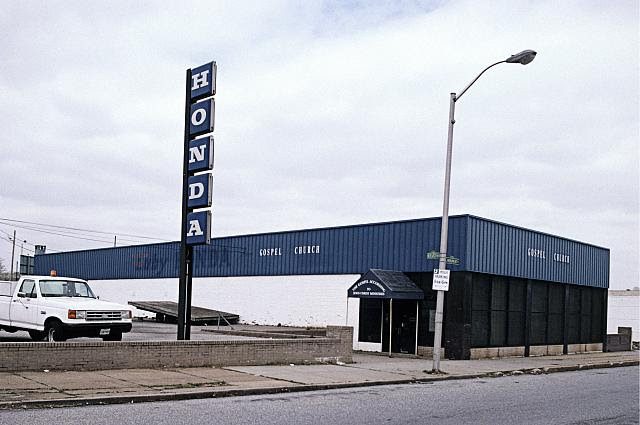
Former Honda dealership turned to Gospel Church According to Jesus Christ, East Monument Ave. at East Ave., Baltimore: photo by Camilo José Vergara, 2002 (Library of Congress)

1600 N. Bond St., Baltimore: photo by Camilo José Vergara, 2002 (Library of Congress)

Former Broadway Trust Company, Broadway at Walnut St., Camden, New Jersey. The large classical building is now the St. James Apostolic Temple. It glows like a survivor from an ancient civilization: photo by Camilo José Vergara, 2003 (Library of Congress)
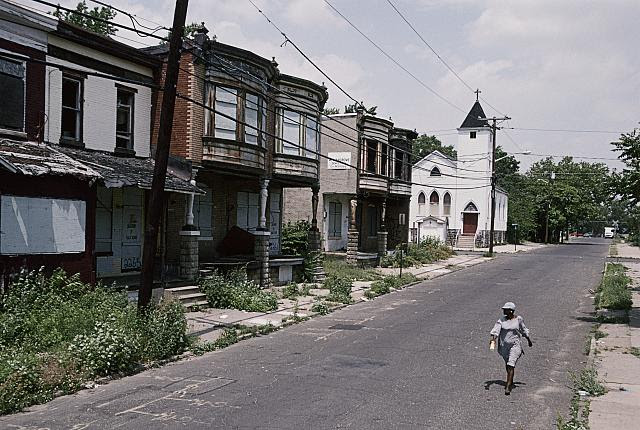
View north along 7th St. towards Florence, Camden, New Jersey: photo by Camilo José Vergara, 2005 (Library of Congress)

Children playing last week in
Sandtown-Winchester, the Baltimore neighborhood where Freddie Gray was
raised. One young resident called it “a tough community.”: photo by
Todd Heisler/The New York Times, 3 May 2015
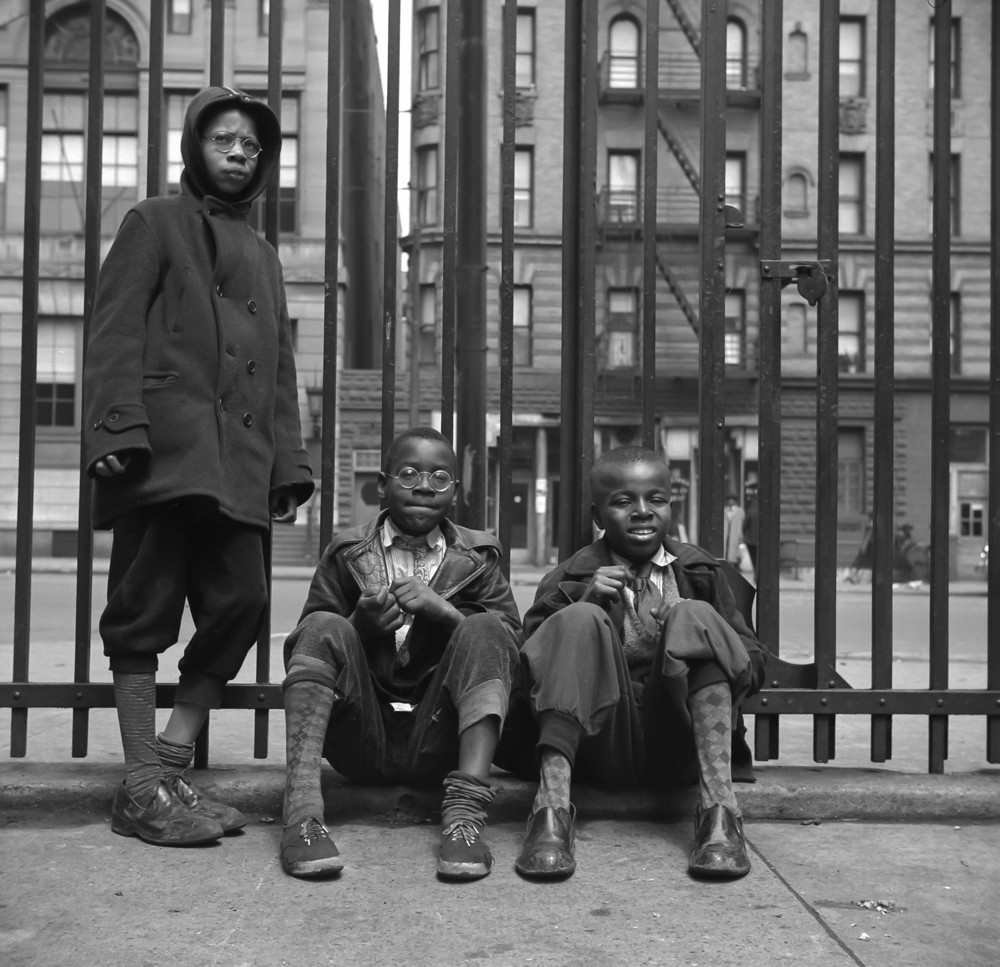
New York, New York. Three boys who live in the Harlem area:
photo by Gordon Parks for the US Office of War Information, May-June
1943; image by C. Thomas Anderson/Verbatim Multimedia, 1 November 2011
(Farm Security Administration / Office of War Information Collection,
Library of Congress)
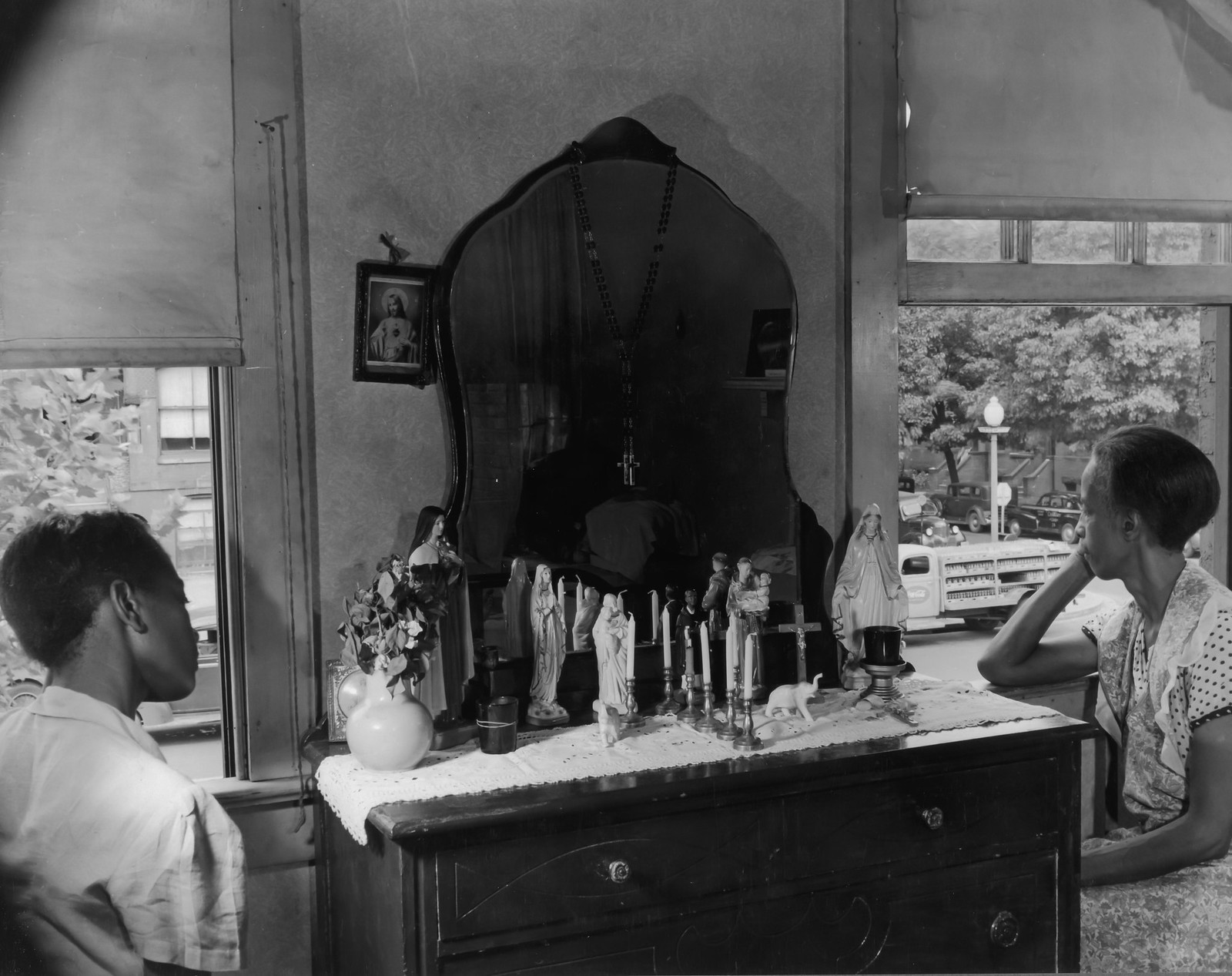
Washington, D.C. Mrs. Ella Watson, a government charwoman, and her adopted daughter:
photo by Gordon Parks for the US Office of War Information, August
1942; image by C. Thomas Anderson/Verbatim Multimedia, 29 April 2013
(Farm Security Administration / Office of War Information Collection,
Library of Congress)

Washington, D.C. Mrs. Ella Watson, a government charwoman, and her adopted daughter: photo by Gordon Parks for the US Office of War Information, August 1942; image by C. Thomas Anderson/Verbatim Multimedia, 29 April 2013 (Farm Security Administration / Office of War Information Collection, Library of Congress)

Washington, D.C. Mrs. Ella Watson, a government charwoman, and her adopted daughter: photo by Gordon Parks for the US Office of War Information, August 1942; image by C. Thomas Anderson/Verbatim Multimedia, 29 April 2013 (Farm Security Administration / Office of War Information Collection, Library of Congress)



2 comments:
beautiful ...thinking about it...thanks!
Thanks so much Sandra -- that's all any of this was ever meant to do, encourage people to think, while that's still possible...
Nina Simone: Ain't Got No... I've Got Life
Post a Comment